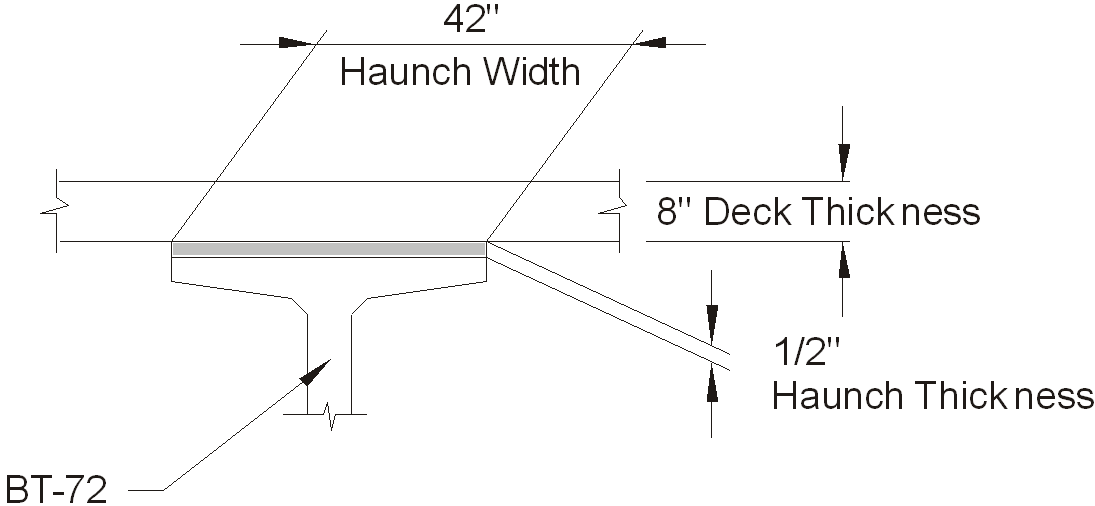Geometry Terms
| Term | Definition |
|---|---|
| Overall Width | Width of bridge measured from edge to edge (constant for all spans). |
| Curb Data |
Left and right curb widths. |
| Deck Thickness (effective) |
The effective thickness of the cast-in-place deck. Precast/Prestressed Girder automatically computes the dead load of this deck and also considers entire thickness to be effective for computing composite section properties. |
| Deck Thickness (sacrificial) |
Enter the sacrificial wearing surface/deck thickness. The program automatically computes the self weight due to this thickness, and shows it as dead load on precast in the results. This thickness is not used in composite section properties computation. |
| Haunch Thickness |
The haunch or concrete build-up thickness. |
| Haunch Width |
The haunch or concrete build-up width. Could be less than the flange width if using stay-in-place forms. |
| Skew Angle |
Precast/Prestressed Girder allows the user to enter a starting skew angle as well as an ending skew angle for each span. |
| Lane Data - Number |
Number of lanes. |
| Lane Data - Width | Width of each lane. |
| Beam Type/Location |
This field is for beam type selection. within the beam type chosen. Select a beam ID from the list. |
| Beam ID |
This field is the name of the section within the beam type chosen. Select a beam ID from the list. |
| Dist. from Last Beam |
The distance from the CL of selected beam to the CL of the beam to its left. For the first beam, enter the distance from the left edge of the bridge to the centerline of the first beam. |
| Pier-to-Pier |
For multi-spans only. Distance between centerlines of piers. The pier-to-pier dimensions are used in the continuous beam model to calculate the dead load acting on the composite section and for live load analyses. The distance from CL of pier to CL of bearing at abutment is used to calculate the pier-to-pier dimension in end spans of continuous units. |
| Precast Length |
The overall length of the precast beam. |
| Bearing to Bearing |
The CL of bearing to CL of bearing length. This is the design length. |
| Pier CL- Precast |
For multi-spans only. Horizontal distance measured from left pier centerline to left precast beam end. This value is positive if the CL of pier is to the left of the precast end; otherwise it is negative. The distance is zero (0) if the precast end coincides with the pier CL. |
| Release Span |
The span length used to compute moments at release for the release stress check. Release span is typically set equal to the precast length. |


